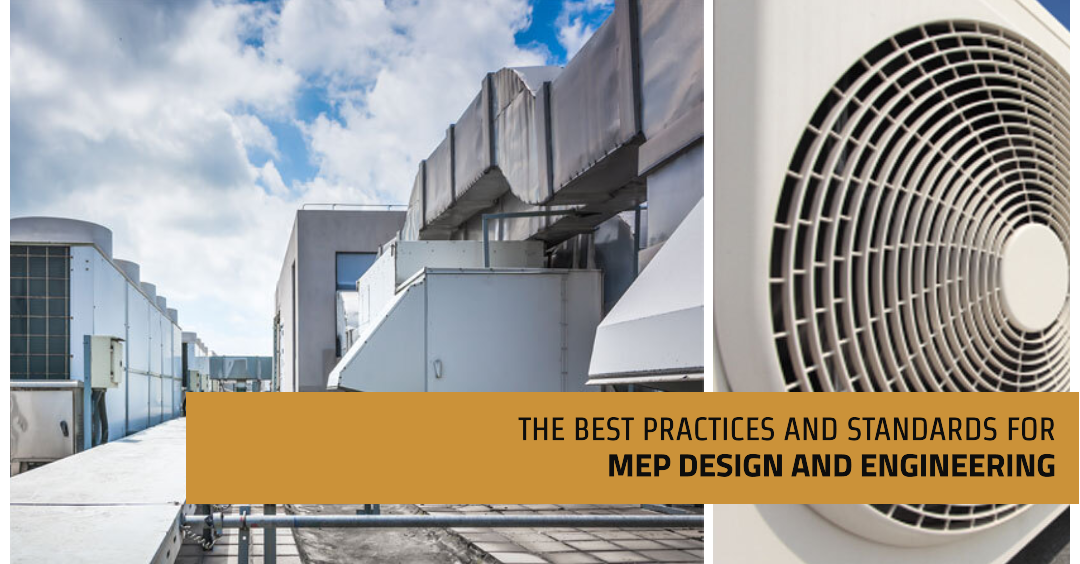In the quest for sustainable building practices, Mechanical, Electrical, and Plumbing (MEP) engineering plays a pivotal role. As the backbone

MEP design and engineering is a vital and challenging aspect of the engineering and construction industry. MEP stands for mechanical, electrical, and plumbing, and it refers to the systems and services that provide comfort, safety, functionality, and sustainability to buildings. MEP design and engineering involves planning, designing, installing, operating, and maintaining these systems in accordance with the project requirements, standards, codes, and regulations.
However, MEP design and engineering is not a simple or straightforward task. It requires the coordination and collaboration of various stakeholders, such as owners, architects, engineers, contractors, consultants, suppliers, and authorities. It also requires the application of technical knowledge, skills, tools, and methods to ensure the quality, performance, efficiency, and reliability of MEP systems and services.
Therefore, it is important for MEP professionals to follow the best practices and standards for MEP design and engineering. These are the guidelines or principles that can help MEP professionals to achieve the optimal results or outcomes for their projects. In this article, we will discuss some of the best practices and standards for MEP design and engineering that can help MEP professionals to improve their work quality and productivity.
One of the best practices for MEP design and engineering is to define the project scope and requirements clearly. The project scope and requirements are the basis or foundation of MEP design and engineering. They specify what needs to be done, how it needs to be done, when it needs to be done, and why it needs to be done. They also define the expectations and specifications of the project stakeholders.
Therefore, it is essential for MEP professionals to define the project scope and requirements clearly before starting any MEP design or engineering work. This can help them to avoid confusion, ambiguity, or misunderstanding among stakeholders. It can also help them to plan, design, install, operate, and maintain MEP systems and services that meet the project objectives and expectations.
Some of the steps or methods that can help MEP professionals to define the project scope and requirements clearly are:
Another best practice for MEP design and engineering is to coordinate and collaborate with other disciplines effectively. MEP design and engineering is not an isolated or independent activity. It is an integral part of the engineering and construction process that involves other disciplines such as architecture, structural engineering, civil engineering, or fire protection engineering. These disciplines have to work together to create a coherent and harmonious building design that satisfies the functional and aesthetic needs of the project stakeholders.
Therefore, it is important for MEP professionals to coordinate and collaborate with other disciplines effectively throughout the project lifecycle. This can help them to avoid conflicts, interferences, or discrepancies among disciplines. It can also help them to optimize the spatial coordination, integration, and performance of MEP systems and services with other building elements.
Some of the steps or methods that can help MEP professionals to coordinate and collaborate with other disciplines effectively are:
Another best practice for MEP design and engineering is to apply the latest technologies and innovations. Technologies and innovations are the drivers or enablers of change and improvement in MEP design and engineering. They can provide new solutions or opportunities for enhancing the quality, performance, efficiency, or reliability of MEP systems and services. They can also provide new tools or methods for improving the work quality or productivity of MEP professionals.
Therefore, it is important for MEP professionals to apply the latest technologies or innovations in their projects. This can help them to stay updated or ahead of the market trends or demands. It can also help them to create value or competitive advantage for their projects.
Some of the latest technologies or innovations that can be applied in MEP design and engineering are:
Another best practice for MEP design and engineering is to follow the relevant standards and codes. Standards and codes are the rules or regulations that govern the quality, performance, safety, or sustainability of MEP systems and services in buildings. Standards and codes are established by authorities such as governments, associations, or organizations to ensure the compliance or conformity of MEP systems and services with the project requirements, expectations, or specifications.
Therefore, it is important for MEP professionals to follow the relevant standards and codes in their projects. This can help them to avoid non-compliance or deviation from the project requirements, expectations, or specifications. It can also help them to avoid penalties, fines, or legal actions from the authorities or stakeholders.
Some of the relevant standards and codes that can be followed in MEP design and engineering are:
Conclusion
MEP design and engineering is a complex and challenging task that requires the application of technical knowledge, skills, tools, and methods to ensure the quality, performance, efficiency, and reliability of MEP systems and services in buildings. However, MEP design and engineering can be improved by following the best practices and standards discussed in this article. These are the guidelines or principles that can help MEP professionals to achieve the optimal results or outcomes for their projects. By following these best practices and standards, MEP professionals can improve their work quality and productivity.
About Author
InnoDez